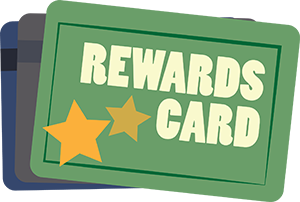Crucial Strategic Decisions for Engagement Success
When valued customer visiting cards and buy-9-get-1-free engagement techniques are not enough anymore, many business owners are at a loss how to grow and develop their loyalty programs or engage their long-time employees. Gamification platforms are developed by companies specializing in user engagement. They can make the life of a non tech-savvy owner much easier by centralizing and organizing all engagement efforts. However, new engagement solutions seem to be popping up every day. What should you take into account when researching and choosing a gamification platform?
1. Figure out what you’re trying to solve
This is the most important step, yet companies often fail to approach gamification with specific goals. One of the most common things we see at TechnologyAdvice are companies that expect gamification to solve problems such as “poor sales” or “low customer engagement.” These types of issues have multiple causes and generally cannot be fixed by a single initiative.
Instead, focus on a specific metric that impacts your broader goal. If you want to raise sales, come up with a game-plan for how to do that, and then figure out how gamification can support a piece of that plan. Once you have identified a certain behavior you’d like to change, you can tailor a gamification program around that goal. For instance, you might notice that your sales team is not following up with leads past the second call. To change this, you could set up a leaderboard ranking each team member, then reward points for following up with leads multiple times.
2. Identify your target market
There are two main types of gamification programs – those aimed at consumers or users (think Starbucks Rewards), and those aimed at employees (such as Deloitte’s online Leadership Academy). Determining which one you need will depend on the type of business you have. If you are trying to improve office morale, then an employee gamification program is going to be the right fit. If you want to raise consumer awareness about a new product, a user-focused gamification program is more appropriate.
Beyond the type of program, you will also need to decide exactly which users or employees need to be targeted. There are gamification programs designed for use by the entire office (like company-wide wellness programs), but most platforms have a narrower focus.
Instituting an office wide point system does not make much sense if you are just trying to improve your marketing, sales, or click-through rates. For one, employees might be confused about how to compete, and there is no reason to spend extra money on systems that will not be used. Instead, tailor the program around just the division in question.
3. Determine the scale of the program
A concrete idea is important because the scale of your program will dictate the implementation timeline, type of vendor required, and the amount of data you will need to analyze.
User or consumer gamification programs generally have a larger scope than employee programs. This makes sense because they target every customer that interacts with your brand. If you are worried about resources try implementing the program in stages or only making it available to select VIP customers. This can save you money at the start, and identify problems before you launch the program publicly.
If the program is for employees, the scope will be determined by the size of the department you are targeting, and what you want to accomplish. Increasing competition among your sales team, for instance, can be accomplished with a leaderboard and a point system layered over their daily activities. Incentivizing your entire office to adopt healthier exercise routines however, might require a more robust system.
4. Set a budget
No matter what your project goals are, it is helpful to have an idea of how much you would like to spend. While you might not know how much a typical gamification program costs (it varies widely depending on the industry, scope, and target audience), you should have a clear maximum budget.
Without a spending limit, you are setting yourself up for disappointment. Typically, the program that meets every expectation ends up way too expensive. Gamification solutions generally require an upfront payment, and may require a contract for ongoing maintenance or analytics. Knowing what you are willing to spend up front will save you a lot of time in the future.
5. Find vendors that specialize in your industry
Now that you have identified your problem, found your target audience, determined the scope of your program and figured out your budget, you just need to choose a vendor. There are a lot of ways to go about this, from Google searches to general directories like TechnologyAdvice and Gamification Co’s Buyer’s Guide.
Have you had to choose a gamification platform for your business? Share your advice in comments!










These are some great ideas